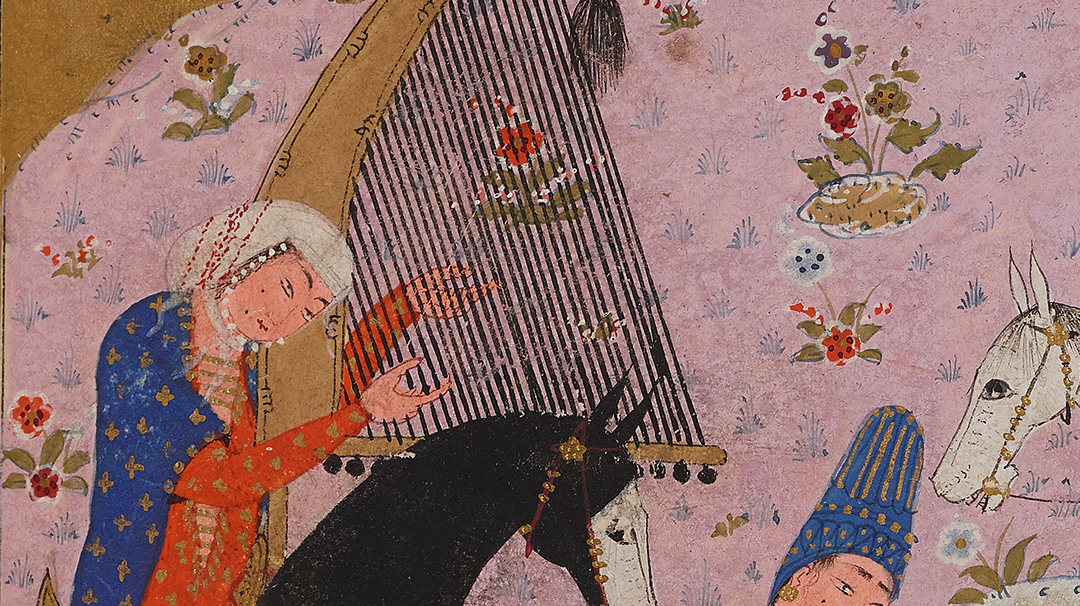“Bahram Gur Performs a Feat of Archery”
Fol. 207v from a manuscript of the Khamseh of Nizami

The fourth poem in Nizami’s quintet, Haft Paykar, (“seven beauties”) recounts the legends
surrounding Bahram Gur, a
king of Iran’s Sasanian dynasty, including his romantic affairs. One famous episode relates to
Bahram Gur and his enslaved concubine Fitna. While out hunting one day, the king asks Fitna to
assess his prowess. Fitna cleverly challenges him to demonstrate his skills by pinning an onager’s
foot to its head. With a well-aimed arrow, the king grazes the animal’s ear; when it scratches the
wound, the king lets fly a second arrow, fixing hoof to head, as depicted here. Filled with
self-pride, Bahram Gur once again asks Fitna for her opinion, but she responds dismissively that
practice, not prowess, helped him perform the feat.
The chang is a harp-like instrument that originated in ancient Iran. In Persian, the word also means
“talon” or “claw” and so Persian painters often depicted the instrument’s frame as terminating in
the head of a bird.
